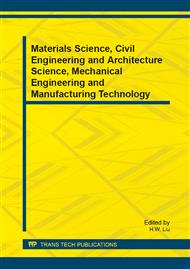p.988
p.995
p.1001
p.1006
p.1011
p.1015
p.1019
p.1023
p.1027
Study of Driver's Gaze Behavior Recognition
Abstract:
The reliability and accuracy of driver gaze behavior detection was improved by the multi-dimensional feature fusion method. In view of the effects of the complexity of the driving environment, a variety of working conditions and the diversity of gaze behavior characteristics,with support vector machine (SVM) theory technique, the multi-dimensional feature decision-level fusion was proposed to estimate the different kind model of the driver's gaze behavior. The results show that the T characteristic curve proposed by the gaze behavior parameters of the transverse width between the eyes and the vertical distance between mouth and the midpoint of two eyes, combined with the driver's eyelid closure and the proportion and location characteristics of iris-sclera were studied to get the characterization of the driver gaze status. The simulation results indicate that the adaptability and accuracy as well as the intelligence level of the bad fixation characterization information screening are significantly improved by using the pattern classification and decision technology of multi-dimensional feature fusion.
Info:
Periodical:
Pages:
1011-1014
Citation:
Online since:
January 2014
Authors:
Price:
Сopyright:
© 2014 Trans Tech Publications Ltd. All Rights Reserved
Share:
Citation:


